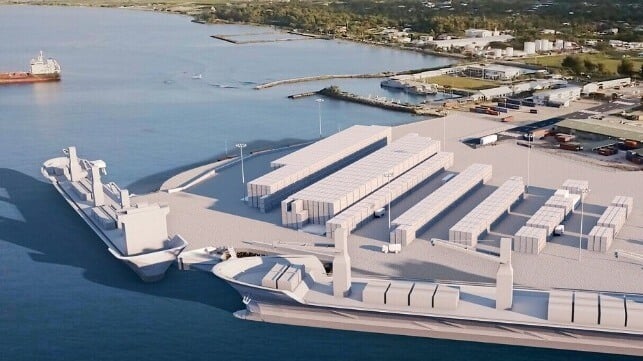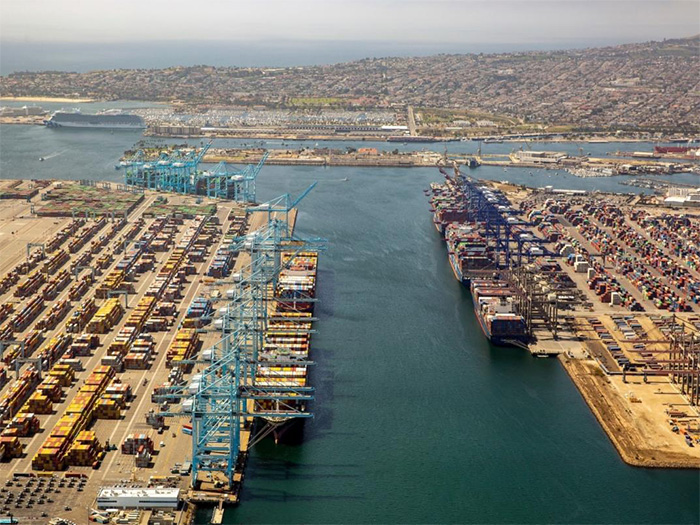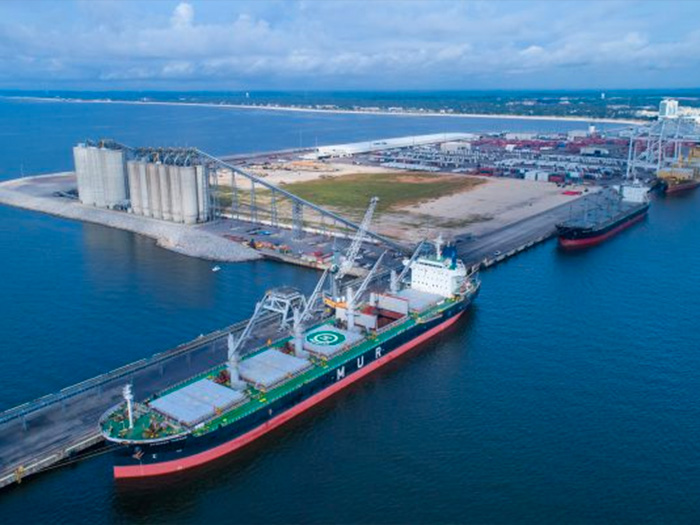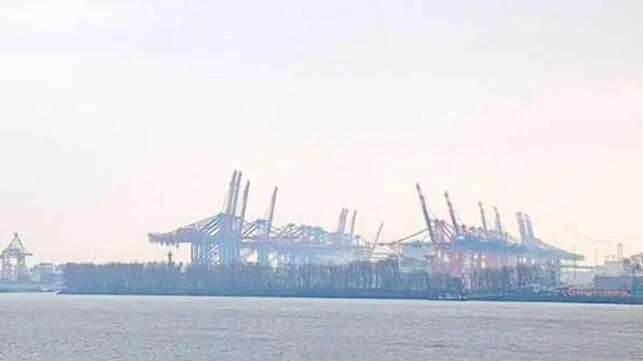JAXPORT, one of the nation’s most diversified ports, also moved nearly 547,500 total vehicles during the year

Port’s diversification across trade lanes and cargo types helped temper pandemic’s impact.
The Jacksonville Port Authority (JAXPORT) maintained steady container volumes and overall revenue during fiscal year 2020, despite the impact the coronavirus pandemic has had on the global economy. JAXPORT’s fiscal year runs October 1 – September 30.
More than 1.277 million twenty-foot equivalent units (or TEUs, the industry standard for measuring containers) moved through JAXPORT in FY2020, down just 5% from 2019, which was a record year for container volumes at the port.
JAXPORT, one of the nation’s most diversified ports, also moved nearly 547,500 total vehicles during the year, maintaining its position as one of the nation’s busiest vehicle-handling ports. An increase in U.S. military vehicle movements at the port helped to offset the industry-wide decline in commercial shipments due to the temporary shutdown of auto manufacturing over the summer caused by the coronavirus.
Despite major global supply and demand challenges due to COVID-19, the port’s revenue remained steady in FY20, at more than $65.1 million, down only 7% for the year, an impact buffered largely by the port’s diversification across multiple trade lanes and lines of business.
“We are extremely grateful to our customers for their partnership as we all continue to work together to adjust to the impact the pandemic has had on the global supply chain,” said JAXPORT CEO Eric Green. “Our employees, union workers, tenants, and port partners have all done a tremendous job keeping the goods we all depend on moving uninterrupted through JAXPORT during this time. Thanks to their dedication and hard work, we are able to end the year on a relatively high note considering the circumstances.”
In September, international rating agency Moody’s Investors Service affirmed JAXPORT’s ‘A2 Stable’ credit rating. In its decision, Moody’s said “The port’s diverse business mix has helped temper” the impacts from COVID-19. Fitch Ratings also affirmed its ‘A Stable’ rating on the port’s outstanding revenue bonds earlier in the year.
In addition to being Florida’s No. 1 container port and the nation’s second-busiest vehicle handling port, JAXPORT offers a diverse mix of cargo and cruise service. Other cargoes include breakbulk, dry and liquid bulk, heavy lift, refrigerated cargo, forest products, high and heavy, liquefied natural gas (LNG), and U.S. military cargo.
Major announcements in FY20 included:
- the federal project to deepen the Jacksonville thshipping channel to 47 feet from its current depth of 40 feet is fully funded through JAXPORT’s Blount Island Marine Terminal. The project creates or protects 15,000 jobs and is anticipated to be complete in 2022, three years ahead of its original schedule.
- JAXPORT and SSA Atlantic broke ground on phased yard improvements at the existing SSA Jacksonville Container Terminal at Blount Island that will enable the facility to handle up to 700,000 TEUs annually. Berth enhancements at the terminal are scheduled to be complete by the end of 2021 and will enable the facility to simultaneously accommodate two post-Panamax vessels.
- Volkswagen Group of America (VWGoA) renewed its commitment to Jacksonville, keeping its import facility and Southeastern distribution center in the city for at least the next three years. VWGoA’s Jacksonville operations support 100 area jobs.
More highlights:
- More than 9.9 million tons of total cargo moved through JAXPORT in FY20, down 9% from 2019, which was also a record year for JAXPORT general cargo volumes.
- Liquid bulk cargoes, including caustic soda, molasses, and corn syrup, were up 12% at nearly 425,800 tons.
- JAXPORT accommodated a total of four Carnival Cruise Line and Norwegian Cruise Line vessels during the industry’s suspension of operations. Port leadership worked with U.S. Customs and Border Protection to assist the cruise lines in safely returning crew members to their home countries.
- The port made clean fuel history by hosting the first LNG bunkering of a foreign-flagged vessel in the United States. The Swedish vessel, FURE VEN, reduces greenhouse gas emissions by up to 99%.
- JAXPORT’s Foreign Trade Zone (FTZ) No. 64, Florida’s largest FTZ by area, continued to grow as businesses adjusted their supply chains during COVID-19. The most recent numbers available show a total of $3.9 billion worth of merchandise entered the zone during a one-year period.
Located in the Southeastern United States at the crossroads of the nation’s rail and highway network, JAXPORT is the global gateway to Florida, the nation’s third-largest state. The port offers service from dozens of ocean carriers, with competitive transit times to 140 ports in more than 70 countries.
Cargo activity at Jacksonville’s seaport supports 138,500 jobs in Florida and more than $31.1 billion in annual economic impact for the region and state.
press release
















